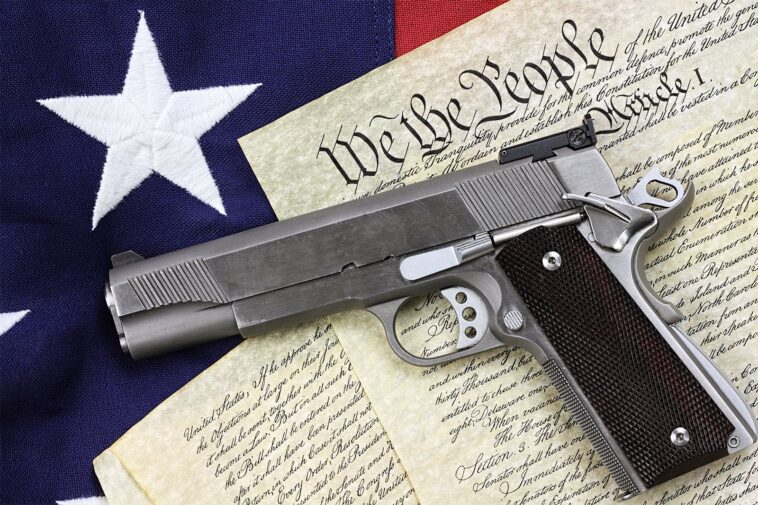Firearms remain the leading cause of fatality amongst American minors and adolescents, with states harboring lenient firearm regulations being subjected to even higher rates of such fatalities, a recent study reveals. This research, which was published in JAMA Pediatrics, examined the correlation between state-level firearm regulations and fatalities amongst the youthful population post-2010. This period follows the milestone Supreme Court verdict of McDonald v. City of Chicago that overturned a ban on handguns, paving the way for subsequent states to ease restrictions on gun procurement and possession. The investigation divided states into three categories based on their firearm policies: ‘most permissive,’ ‘permissive,’ and ‘strict’.
The criteria for these distinct classifications were based on the severity and rigor of firearm laws enforced by each state. Such policies encompassed regulations regarding safe storing of guns, the execution of background checks, and the implementation of controversial ‘Stand Your Ground’ laws that are prevalent in a number of states. The investigative team delved into homicide and suicide statistics involving children, as well as racial disparities within these tragic cases.
Statistical methods were employed to ascertain a concerning amount of 6,029 additional deaths within the states categorized as ‘most permissive,’ in comparison to the predicted figures under regulations preceding the McDonald verdict, from 2011 to 2023. States falling into the ‘permissive’ category sadly recorded 1,424 excess deaths. An alarming total of roughly 23,000 deaths transpired during the post-McDonald verdict era, surpassing the approximate 17,000 initially expected.
Among the eight states adhering to the strictest firearm laws, four states – California, Maryland, New York, and Rhode Island – witnessed statistically significant drops in juvenile firearm mortality rates. On the contrary, Illinois, profoundly impacted by the McDonald court ruling, and Connecticut both experienced surges in these unfortunate statistics. There were inconclusive changes reported in Massachusetts and New Jersey due to statistical insignificance.
Notably, barring Alaska, Arizona, Nebraska, and South Dakota, all other states identified in the ‘permissive’ categories saw a rise in their firearm mortality rates post-McDonald case. The demographic most substantially affected by firearm fatalities in the 41 states with less strict gun laws were non-Hispanic Black young people. Even within the states with stringent gun laws, there was a slight escalation in mortality rates for this demographic, albeit very marginal.
The study highlights how policy interventions can play a vital role in mitigating firearm deaths amongst minors and teenagers. This research is particularly pertinent given its release subsequent to a federal report on child health, which, despite intending to illustrate the factors contributing to children’s poor health in the United States, conspicuously left out firearm injuries. This was a remarkable oversight given that, according to the Centers for Disease Control and Prevention, firearm injuries topped the list of causes of child and teenage deaths in 2020 and 2021.
This study further substantiates prior findings indicating that child firearm fatalities tend to decline in states where laws regarding children’s access to firearms, like safe storage and background checks, are more stringent. As an example, Louisiana, labelled as one of the 30 ‘most permissive’ states in this investigation, saw an increase in child firearm mortality from 4.1 per 100,000 children to 5.7 following the McDonald ruling. Yet, in recent times, Louisiana introduced a law permitting public gun possession without background checks and failed to pass a proposed bill on penalizing improper firearms storage.
South Carolina, also among the ‘most permissive’ states, saw the child firearm mortality rate jump from 2.3 to 3.9 per 100,000 children in the aftermath of the McDonald ruling. In a twist of irony, such firearm permissive states have implemented programs designed to interrupt cyclical violence by linking victims with community engagement services. When New York City introduced a similar program focused on violence interruption based in hospitals, approximately two-thirds of the 3,500 patients, who were treated for violent trauma at five hospitals, were connected with community prevention services.
Members of the community have also sought to combat violent crime, like Michelle Bell, who founded the nonprofit ‘More Prayer, Activity & Conversation’ or M-PAC Cleveland, after experiencing an unthinkable tragedy, when her 33-year-old son was shot dead in 2019. M-PAC Cleveland, a collaborative effort uniting individuals who have lost their beloved ones in violent crimes, aims to advocate and educate for safe gun storage policies. The collective also conducts peer grief support groups to help bereaved parents cope with the loss of their children due to gunfire.
In conclusion, the study reveals an alarming correlation between the laxity of state gun laws and the rate of firearm fatalities among children and teens. The demographic most affected in states with looser gun laws are non-Hispanic Black children and teens, showing a noticeable racial disparity. Through rigorous data analysis, the study also shows the significant role policy can play in mitigating the tragic trend of youth firearm deaths.
In light of these findings, the push for more strict firearm regulations appears not just logical but critical, especially laws concerning children’s access to firearms. States with more rigorous laws, such as California, Maryland, New York, and Rhode Island, provide encouraging proof that strict firearm rules can indeed make a significant difference in reducing youth firearm deaths.
It’s important to note though that not all ‘strict’ category states experienced a significant drop in youth firearm deaths. However, the overall picture painted by the data examined in this study suggests that stricter firearm policies at the state level could play a significant role in reducing the alarming rates of child and teen deaths due to firearms.
Nevertheless, the passage and contouring of firearm legislation are complex issues, featuring many layers of contention and disparate views. While stricter laws appear to have a positive impact, it is not a cure-all solution, as evidenced by fluctuations in such rates even in states with strict laws. Assessing these results can contribute to a more nuanced and comprehensive understanding of how to effectively tackle this pressing issue.
In addition to policy changes, community engagement and efforts, like those made by individuals such as Michelle Bell, can also play a fundamental role in curbing violence. By creating platforms for advocacy, education and support, community initiatives can make valuable contributions to reducing firearm-related deaths, particularly for youths.
Given the gravity of this issue and the clear connection between lax firearm laws and increased youth fatalities, it becomes imperative for policymakers, community leaders, and stakeholders to come together to address this crisis. Stricter regulations, educational initiatives about firearm safety, and community-led efforts should all be part of a multi-faceted approach to counteract this ongoing issue.
This critical research not only highlights statistical patterns of youth firearm deaths in relation to state laws but also prompts us to question and reassess our current policies and approaches, in the hope of creating a safer environment for our children and teens.




